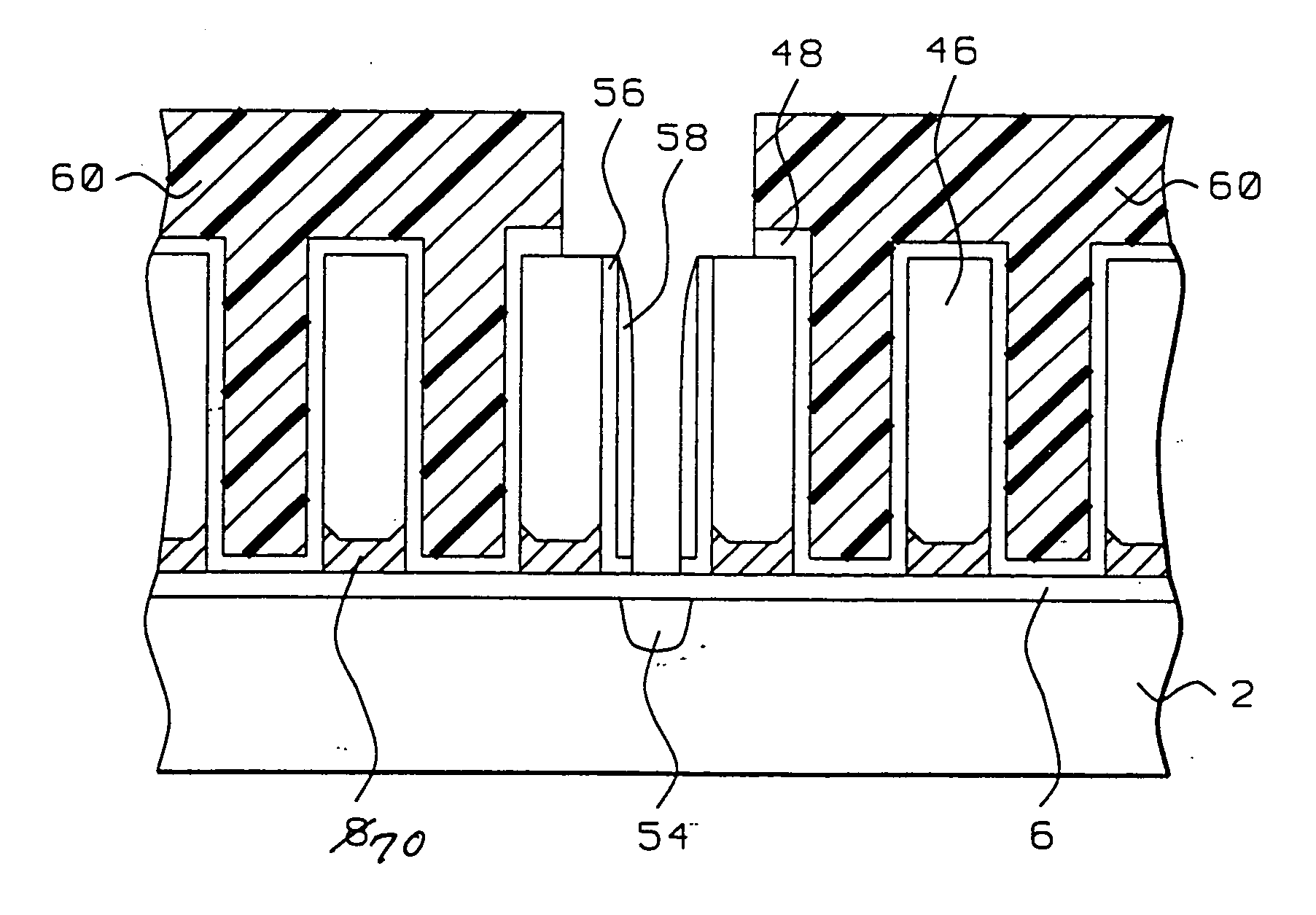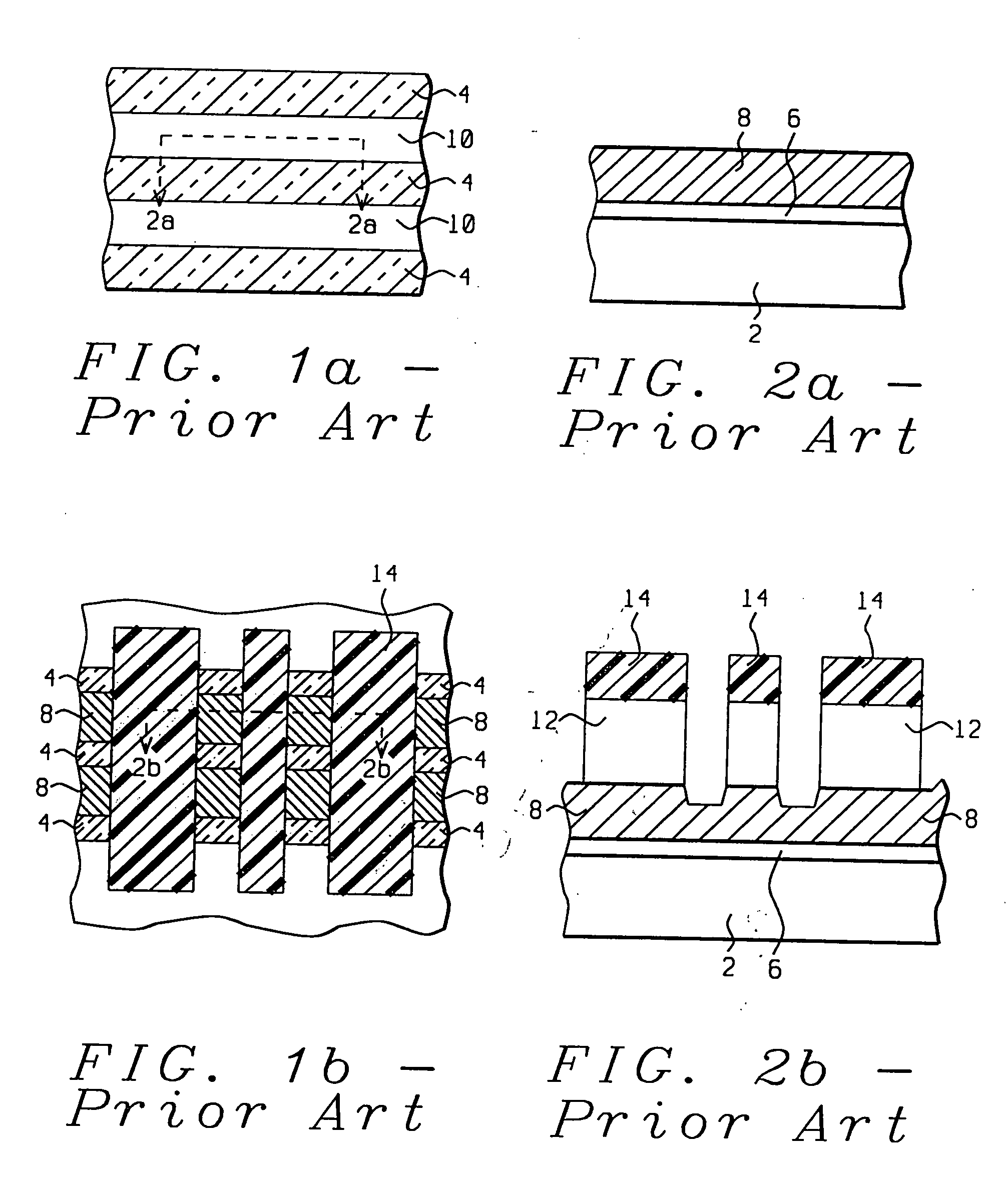Structure and fabricating method to make a cell with multi-self-alignment in split gate flash
- Summary
- Abstract
- Description
- Claims
- Application Information
AI Technical Summary
Benefits of technology
Problems solved by technology
Method used
Image
Examples
Embodiment Construction
[0019] Preferred embodiments of the invention are well described with the aid of FIGS. 3a-3g and 4a-4g. A method of fabricating a novel split gate flash memory cell is presented in FIGS. 3a-3g, where top views of the cell are presented at successive stages of the process and in FIGS. 4a-4g, which show the corresponding cross-sections. A floating gate insulator layer, 6, which preferably is an oxide layer is formed on a semiconductor region, 2, which preferably is a silicon region, to a thickness of about 80 Angstroms, followed by deposition of a first conductor layer, 8, which preferably is a doped poly 1 layer, to a depth of about 800 Angstroms. The doped poly 1 layer, and also the subsequent doped poly layers, is preferably phosphorus doped either in situ or by ion implantation to achieve a high conductivity. Active regions, 10, are defined using isolating regions, such as shallow trench isolation regions, 4. This is followed by deposition of a first insulator layer, which prefera...
PUM
 Login to View More
Login to View More Abstract
Description
Claims
Application Information
 Login to View More
Login to View More - R&D
- Intellectual Property
- Life Sciences
- Materials
- Tech Scout
- Unparalleled Data Quality
- Higher Quality Content
- 60% Fewer Hallucinations
Browse by: Latest US Patents, China's latest patents, Technical Efficacy Thesaurus, Application Domain, Technology Topic, Popular Technical Reports.
© 2025 PatSnap. All rights reserved.Legal|Privacy policy|Modern Slavery Act Transparency Statement|Sitemap|About US| Contact US: help@patsnap.com



